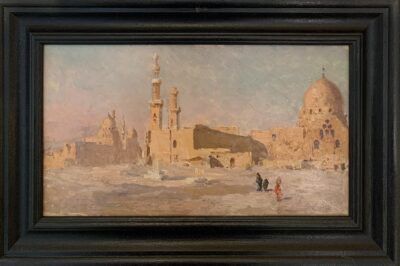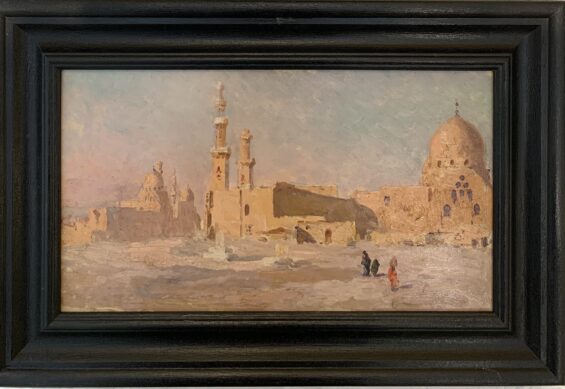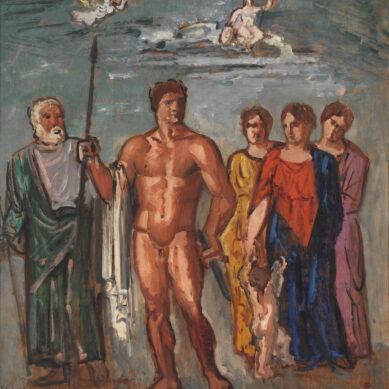You searched
Painter
Odoardo Toscani
Are you interested in the sales or the purchase of his artworks?
We buy works of this artist
and of other painters and sculptors from the 16th century to the first half of the 20th century
The Berardi gallery offers a free and without obligation service for evaluation of ancient and modern art . To find your way in the art market, very complex and full of nuances, it is better to rely on a professional consultant who can answer fast and concretely to your needs. The clarity of the answers will resolve effectively the need to estimate or sell an asset.
Contact us immediately without commitment
Answers also in 24 hours:
Odoardo Toscani
Odoardo Toscani
“The East has two faces when it comes to art: there is the rich, bejewelled, and opulent East of sultans and sultanas, and there’s the East of poor fellahs and Bedouins. There’s the East from “One Thousand and One Night”, and there’s the desert. Its land is always overflowing with colours and lights. It is always filled with poetry…”. This is how Odoardo Toscani introduced Ferrari, Biseo, and Bertolla’s Orientalist paintings at the 1883 National Exhibition in Rome.
Odoardo Toscani was born in Rome in 1859. Although he showed a strong passion for drawing and painting, he graduated in law in 1880 and then decided to enlist in the Bersaglieri regiment in 1882. After passing an examination, he was appointed as a volunteer in the consular career and started serving in 1884.
Between diplomatic career and painting
The diplomatic career and painting constitute the dual aspect of the painter’s entire biography. His first exhibition experience dates back to 1883, when he took part in the National Exhibition in Rome with three different subjects: one with a military theme, The Great Manoeuvres, then a Portrait and finally Ether, a female figure inspired by Neopompeia.
The following year, at the National Exhibition in Turin, he presented several historical and military subjects, including Crimea, 16 August 1855, In marcia and L’alt. Soon after, Toscani began his adventure as a consul between North Africa and the Orient. His career began as a volunteer in Tunis in 1885, then he was appointed vice-consul in Constantinople in 1886 and in Patras in 1893. Once promoted to royal consul, he moved to Cairo where he stayed from 1901 to 1904, ending his career in Izmir from 1905 to 1914, the year of his death.
From North Africa to Turkey: Orientalist Painting
Ever since his first travels as a volunteer in his career as Consul, Toscani always combined diplomatic activity with painting. He has created a rich and almost entirely unpublished corpus of works that render a sparkling vision of a true Orient told in its everyday life, through agile light effects and a strong sensitivity in understanding other cultures.
We are familiar with his consular activities thanks to the numerous reports and accounts he sent to the Ministry of Foreign Affairs of the Kingdom, in which he reveals his side as an attentive connoisseur of the Arab, Turkish and Greek peoples, their economies, trade routes and migratory flows in the Mediterranean. This attitude is decisively reflected in his pictorial production, which can be interpreted as a true ethnographic reportage.
Following the fascinating example of Edmondo De Amicis, Toscani published his travel book Tunis in 1889, in which he perfectly conveys the feeling of continuous discovery and perpetual adventure that he experienced when he was in contact with the people, the landscapes and the urban dimension of Tunisia. “Figures and backgrounds that no artist’s imagination has ever thought of followed one another, intertwined before me with every step I took, and history, legend and the desert met in that strange and indescribable crowd in which the movements, the colour and the grouping of the whole seemed to be sought out in a divine palette”. (O. Toscani, Tunis, 1889, p. 14).
This kaleidoscopic mosaic of tablets depicting the Tunisian desert, the Nile, minarets in Cairo, white marabouts facing the Mediterranean Sea, women outside a mosque, shepherds, merchants, Bedouins, camels, palm trees and pyramids are never merely descriptive because they feed on the energy of the subject taken from life. A dimension that the painter-console conveys again in Tunis when he explains: “I had arrived in Tunis with my palette and my brushes and with a pictorial programme to astound. And there stood before me an obstacle that may seem ridiculous and was instead formidable for me; that of not knowing where to begin” (O. Toscani, Tunis, 1889, p. 44).
Elena Lago
Bibliography:
Toscani, La pittura all’Esposizione di Roma, in “La Rassegna italiana”, III, 1883, 1, p. 271.
Toscani, Tunisi, Turin: L. Roux e C. Editori, 1889.
Ermini, Rassegna della letteratura italiana, in “L’Arcadia. Periodico di scienze, lettere ed arti”, II, 1890, 1, p. 566-567.





